28 results
Common Core HSN-Q.A.3 resources for Microsoft Word under $5

Math Placement Exam Review
Math Placement Exam Review
The placement exam is designed to test a student’s knowledge of High School-Level material that is essential to success in MATH. A score of 70% or higher is required to pass the test. Students who score less than 70% will be moved to a section of Basic MATH.
It contains 34 Math questions.
It is 6 pages.
This is a great way to help students review for the PARCC Test.
My Quizzes:
4th Grade Word Problems Quiz (10 Q)
Equations and Inequalities Quiz (20 Question
Subjects:
Grades:
10th - 12th, Higher Education, Adult Education
Types:
CCSS:
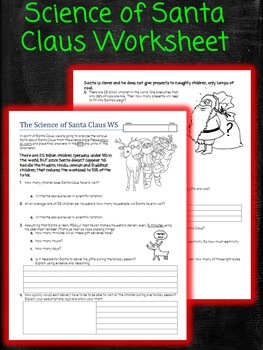
Science of Santa Claus Worksheet
This a hilarious worksheet designed for student to practice their problem solving and math skills. Just look at the two preview questions.
Perfect for that last school day before the winter or Christmas holiday break. Reviews concepts: percent, rate, dimentional analysis, heat transfer, time calculations.
Allows students to practice their Common Core Math Skills!
Works great for both math and science classes.
Besides, who wouldn't want to do some real math on whether Santa Clause is real.
Grades:
7th - 12th
Types:
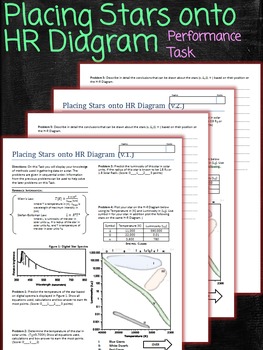
Placing Stars onto H-R Diagram Performance Task
On this task students will display your knowledge of methods used in gathering data on a star. The problems are given in sequential order. Information from the previous problems can be used to help solve the later problems on this task. Students will read infromation from a spectra of a star. Calculate temperature using Weins Law. Calculate the luminosity using Stefan-Boltzman Law and finally place the star on the Hertzsprung-Russel Diagram. Math CC.6.EE Apply and extend previous understandings
Subjects:
Grades:
9th - 12th, Higher Education, Adult Education
Types:
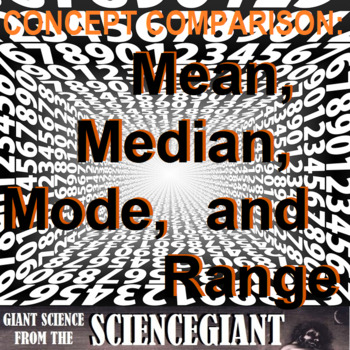
Concept Comparison Frame: Mean, Median, Mode and Range
Students of STEM subjects use many math tools to evaluate data. This concept comparison helps Ss understand how asking to take an average might mean taking the mean...or the median...or the mode...or none of them but the average is on the line of best fit. This activity reinforces estimating, plotting and graphing, mean, median, and mode. It can be extended to include calculating fractions and percentages.Also included is M&M Math: Candy Counting and Graphing of Mean, Mode, Median, and Range
Grades:
7th - 12th
NGSS:
HS-ESS3-2
, HS-PS4-5

Question Exploration: How Much Does 1+1= In Significant Digits?
How much does 1+1? It can depend on significant digits. This concept comparison contrasts accuracy and precision in measurement, and the question exploration explains how to use all the significant figure rules to make measurements, as well as how to round to the right number of sig figs when using scientific notation. Question Exploration Routine is an instructional methods that teachers can use to help a diverse student population understand a body of content information by carefully answering
Subjects:
Grades:
9th - 12th, Higher Education
Also included in: StayGiant Physics Bundle: Measurement
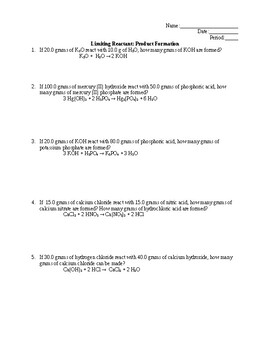
Limiting and Excess Reactant Worksheet
This worksheet helps reinforce concepts from the Limiting and Excess Reactants PowerPoint. This is the fourth worksheet in the scale factor method series. The worksheet can be used with any stoichiometry method, but the answer key shows how to answer the questions using the scale factor approach.The scale factor method is an innovative and intuitive approach to solving stoichiometry problems. Students using this method learn to solve problems much more quickly and successfully than when using di
Subjects:
Grades:
9th - 12th, Higher Education
Types:
NGSS:
HS-PS1-7
Also included in: Limiting and Excess Reactants Bundle

Measurement Activity
This activity can be used for any level of measurement skills. Specific cut out rulers included!!In chemistry, we use this activity to practice reading equipment to the correct number of significant figures. This activity also allows for students to practice their knowledge of laboratory equipment.
Subjects:
Grades:
8th - 12th
Types:
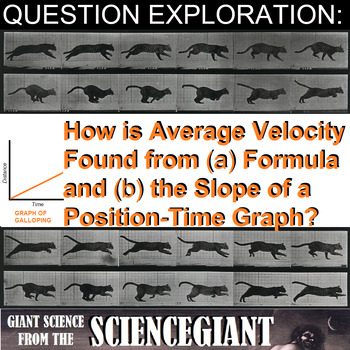
Question Exploration: Solve Average Velocity from a Position-Time Graph
How is average velocity calculated from a position-time graph? This question exploration explains how average velocity can be found as the slope of a displacement-time graph, and gives physics Ss practice solving average velocity as it can be algebraically rearranged into a kinematic equation.Question Exploration Routines are instructional methods that teachers can use to help a diverse student population understand a body of content information by carefully answering a critical question to arri
Subjects:
Grades:
8th - 12th, Higher Education
Also included in: StayGiant Physics Bundle: Kinematics

Composition of a Hydrate Lab
Lab Experiment for Stoichiometry! Want to include a lab experiment that correlates with Stoichiometry? This lab report requires students to directly apply their understanding of Empirical Formula and Percent Composition in a practical way! Students will choose one hydrate to use in the lab procedure. Students will be given the formula of the anhydrous form, but the number of water molecules in the hydrate are unknown. Students will be determining the number of water molecules by heating the hydr
Subjects:
Grades:
11th - 12th
Types:
CCSS:
NGSS:
HS-PS1-7
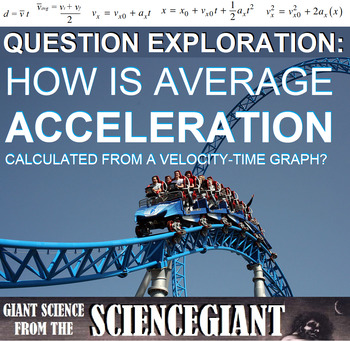
Question Exploration: Solve Average Acceleration from a Velocity-Time Graph
How is average acceleration calculated from a velocity-time graph? This question exploration explains how average acceleration can be found as the slope of a v-t graph, and gives physics Ss practice solving changing velocity as it can be algebraically rearranged into a kinematic equation.Question Exploration Routines are instructional methods that teachers can use to help a diverse student population understand a body of content information by carefully answering a critical question to arrive at
Grades:
9th - 12th, Higher Education
Also included in: StayGiant Physics Bundle: Kinematics
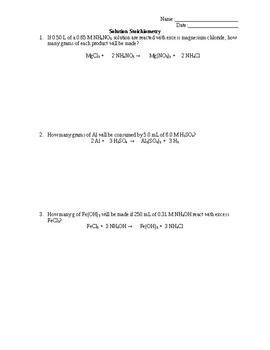
Solution Stoichiometry Worksheet
This worksheet helps reinforce concepts from the Solution Stoichiometry PowerPoint. This is the fifth worksheet in the scale factor method series. The worksheet can be used with any stoichiometry method, but the answer key shows how to answer the questions using the scale factor approach.The scale factor method is an innovative and intuitive approach to solving stoichiometry problems. Students using this method learn to solve problems much more quickly and successfully than when using dimensiona
Subjects:
Grades:
9th - 12th, Higher Education
Types:
NGSS:
HS-PS1-7
Also included in: Solution Stoichiometry Bundle
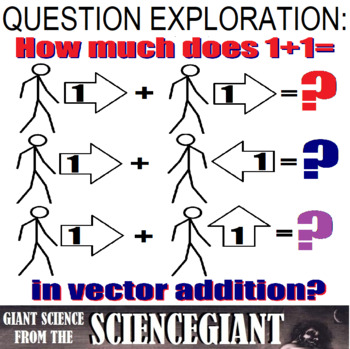
Question Exploration: How Much Does 1+1= In Vector Addition? PART 1
How much does 1+1 equal? 2? 0? 1.414? It depends on how you do vector addition in physics! This question exploration explains definitions, how to distinguish between vectors and scalars, and gives Ss practice adding vectors in one dimension and in two dimensions.Question Exploration Routines are instructional methods that teachers can use to help a diverse student population understand a body of content information by carefully answering a critical question to arrive at a main idea answer. Stude
Subjects:
Grades:
9th - 12th, Higher Education
CCSS:
Also included in: StayGiant Physics Bundle: Measurement

Solution Stoichiometry Bundle
This bundle contains the PowerPoint, worksheet, and key for Solution Stoichiometry using the scale factor method. This is the fifth bundle in the scale factor method series. The worksheet can be used with any stoichiometry method, but the answer key shows how to answer the questions using the scale factor approach.The scale factor method is an innovative and intuitive approach to solving stoichiometry problems. Students using this method learn to solve problems much more quickly and successfully
Subjects:
Grades:
9th - 12th, Higher Education
NGSS:
HS-PS1-7
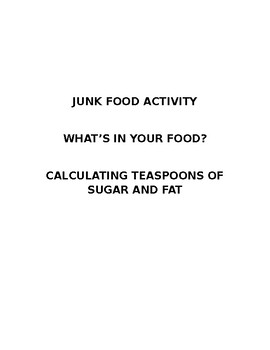
Junk Food Activity
"Whats in your food?" junk food activity is used during a Nutrition unit. Students will have the opportunity to calculate how many teaspoons of fat are in common foods that they eat. With this hands-on activity students can visually see the amount of fat and sugar in their foods using real sugar and Crisco as fat. At the bottom of the document, the directions are translated in Spanish for English Language Learners.
Grades:
6th - 12th
Types:

Rate Problems Homework
This product comes with a homework including one-step, two-step, and multi-step rate problems. It also comes with a unit conversion chart and an answer key.
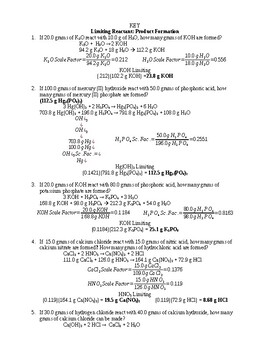
Limiting and Excess Reactants Worksheet Key
This key for the Limiting and Excess Reactants PowerPoint. This is the fourth worksheet in the scale factor method series. The worksheet can be used with any stoichiometry method, but the answer key shows how to answer the questions using the scale factor approach.The scale factor method is an innovative and intuitive approach to solving stoichiometry problems. Students using this method learn to solve problems much more quickly and successfully than when using dimensional analysis. Once you hav
Subjects:
Grades:
9th - 12th, Higher Education
Types:
NGSS:
HS-PS1-7
Also included in: Limiting and Excess Reactants Bundle
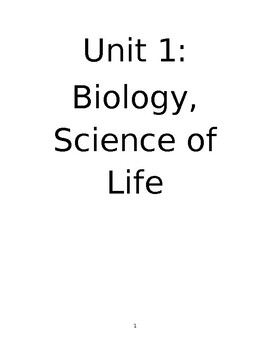
Unit 1 Biology Lesson Workbook (Reading graphs, charts, and tables)
This Unit 1 Biology workbook is for the students to fill out during lecture and during lab activities. It is meant to be an all in one packet for the Unit. The students turn this in the day of their test and it has a rubric scoring form in the front. The answer keys are not available with this, but come separately.
Grades:
9th - 10th
Types:

Scale Factor Extensions Bundle
This bundle contains the Scale Factor Extensions PowerPoint, worksheet, and accompanying key. This is the seventh bundle in the scale factor method series. It requires calculating gas volumes generated and numbers of particles formed. Excess reactants are clearly defined--students do not need to know the concept of limiting reactant to do this worksheet. The worksheet can be solved using any stoichiometry method, but the key shows how to solve using the scale factor method.The scale factor metho
Subjects:
Grades:
9th - 12th, Higher Education
NGSS:
HS-PS1-7

Rate and Proportion Common Core algebra 1 lesson in Spanish
This lesson is a translation to Spanish, and a reduction of the Common core lesson on Rate and Proportion.
I used Emath instruction Unit 1 lesson 1 to write this translation
It is correlated to module 1 of the common core engage NY book
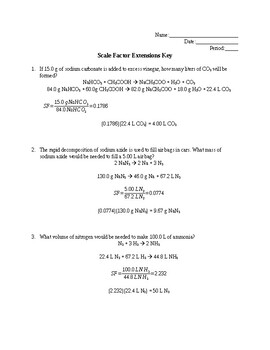
Scale Factor Extensions Worksheet
This worksheet helps reinforce concepts from the Scale Factor Extensions PowerPoint. This is the eighth worksheet in the scale factor method series. It requires calculating gas volumes generated and numbers of particles formed. Excess reactants are clearly defined--students do not need to know the concept of limiting reactant to do this worksheet. The worksheet can be solved using any stoichiometry method, but the key shows how to solve using the scale factor method.The scale factor method is an
Subjects:
Grades:
9th - 12th, Higher Education
Types:
NGSS:
HS-PS1-7
Also included in: Scale Factor Extensions Bundle
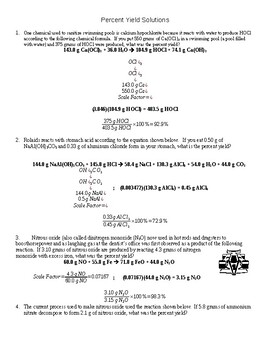
Percent Yield Worksheet Key
The key for the worksheet. This is the sixth worksheet in the scale factor method series. The first half of the worksheet has a clearly defined limiting reactant. In the second half, determining the limiting reactant is part of the process. The worksheet can be used with any stoichiometry method, but the answer key shows how to answer the questions using the scale factor approach.The scale factor method is an innovative and intuitive approach to solving stoichiometry problems. Students using thi
Subjects:
Grades:
9th - 12th, Higher Education
Types:
NGSS:
HS-PS1-7
Also included in: Percent Yield Bundle
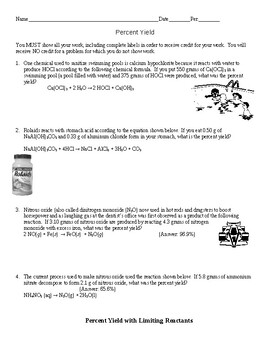
Percent Yield Worksheet
This worksheet helps reinforce concepts from the Percent Yield PowerPoint. This is the sixth worksheet in the scale factor method series. The first half of the worksheet has a clearly defined limiting reactant. In the second half, determining the limiting reactant is part of the process. The worksheet can be used with any stoichiometry method, but the answer key shows how to answer the questions using the scale factor approach.The scale factor method is an innovative and intuitive approach to so
Subjects:
Grades:
9th - 12th, Higher Education
Types:
NGSS:
HS-PS1-7
Also included in: Percent Yield Bundle
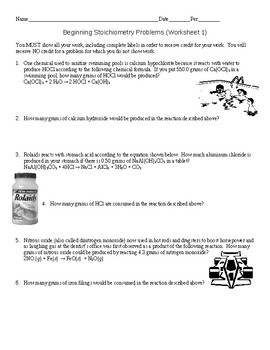
Beginning Stoichiometry Worksheet
The scale factor method is an innovative and intuitive approach to solving stoichiometry problems. Students using this method learn to solve problems much more quickly and successfully than when using dimensional analysis. Once you have used it, you won't want to go back!
Subjects:
Grades:
9th - 12th, Higher Education
Types:
NGSS:
HS-PS1-7
Also included in: Mass-Mass Stoichiometry Bundle
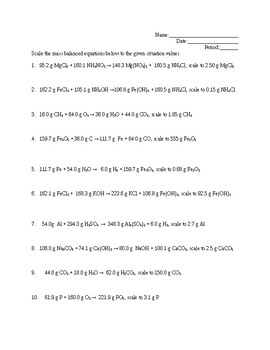
Scaling Chemical Equations Worksheet
This worksheet provides your students with practice to reinforce the concept of scaling chemical reactions using the scale factor method.The scale factor method is an innovative and intuitive approach to solving stoichiometry problems. Students using this method learn to solve problems much more quickly and successfully than when using dimensional analysis.
Subjects:
Grades:
9th - 12th, Higher Education
Types:
CCSS:
NGSS:
HS-PS1-7
Also included in: Scaling Chemical Equations Bundle
Showing 1-24 of 28 results

